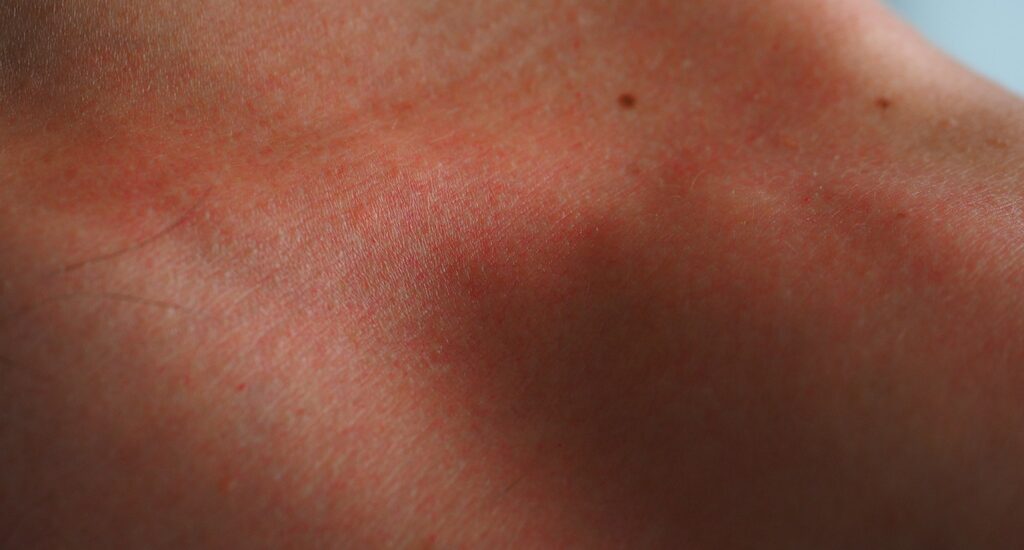If you’ve noticed red skin after exfoliation, this guide will help you learn the essential tips on handling red skin following exfoliation. We’ll cover care routines, potential problems, and effective remedies.

Table of Contents
Is It Normal for Your Skin to Be Red After Exfoliating?
Yes, it’s quite common to notice red skin after exfoliation. This occurrence is often a sign that the dead skin cells on the top layer have been removed, revealing fresher skin beneath.
However, the degree and duration of redness can vary. Typically, a slight redness that disappears within a day is considered normal.
It’s essentially your skin’s natural response to the exfoliation process as it tends to be more sensitive after the dead skin cells are removed.
If the redness persists or intensifies over a period of time, it could be a signal of a problem. In such cases, it’s prudent to consult with a healthcare provider.
Healthline affirms that excessive redness can be a result of over-exfoliation, which can potentially damage your skin barrier.
How to Reduce Redness After Exfoliation
If you find yourself dealing with red skin after exfoliation, there are several steps you can undertake to alleviate the discomfort.
Firstly, cooling the affected area can provide immediate relief. Applying a cool compress for about 15-20 minutes should help in reducing the redness.
In addition, utilizing skincare products enriched with aloe vera or chamomile can further soothe the skin due to their anti-inflammatory properties. These natural ingredients can promote healing and calm irritation.
You can confirm with your dermatologist if you can use this Cetaphil Soothing Gel-Cream with Aloe listed on Amazon.
To add on, avoiding direct sunlight can prevent further irritation. Moreover, applying a high SPF sunscreen can protect the delicate newly revealed skin layers from harmful UV rays. It’s advisable to use sunscreen even if you stay indoors.
You can check out this EltaMD UV Clear Face Sunscreen on Amazon.
Care Tips to Avoid Red Skin After Exfoliation
To avoid facing the problem of red skin after exfoliation, you need to follow a diligent skincare routine.
It’s essential to exfoliate not more than twice a week to keep skin irritation at bay. Over-exfoliation can lead to a compromised skin barrier, which can make your skin more prone to infections and acne.
Choosing exfoliators with mild ingredients that suit your skin type is key. Before incorporating a new product into your routine, always perform a patch test to ensure it does not irritate your skin.
Post-exfoliation, it is imperative to hydrate your skin well to help it recover. Moisturizing after exfoliating helps to replenish the moisture lost during the process and nurture the new skin cells.
Check out these other related articles…
How Long Does it Take for Over Exfoliated Skin to Heal?
How Long Does it Take for Exfoliation to Lighten Skin?
What Does Exfoliation Do to Your Skin: An Expert Breakdown
Problem Indicators to Watch Out For
While slight redness is typical after exfoliation, there are signs that can indicate a more serious issue.
A severe burning or stinging sensation is not a normal reaction and signifies that the skin has been overly irritated or even damaged during exfoliation. It’s essential to heed these warning signs to prevent any long-term damage to your skin.
Swelling in the affected areas, the development of blisters or sores, and prolonged redness lasting several days are all indicators that something is wrong. These signs can be a precursor to skin infections or other skin conditions.
Therefore, it’s critical to consult a dermatologist if you experience these symptoms. The American Academy of Dermatology Association recommends seeking medical advice to address such issues effectively and prevent potential complications.


